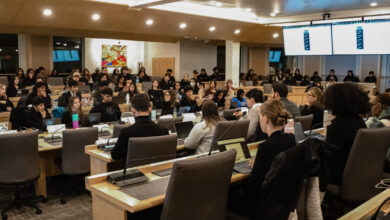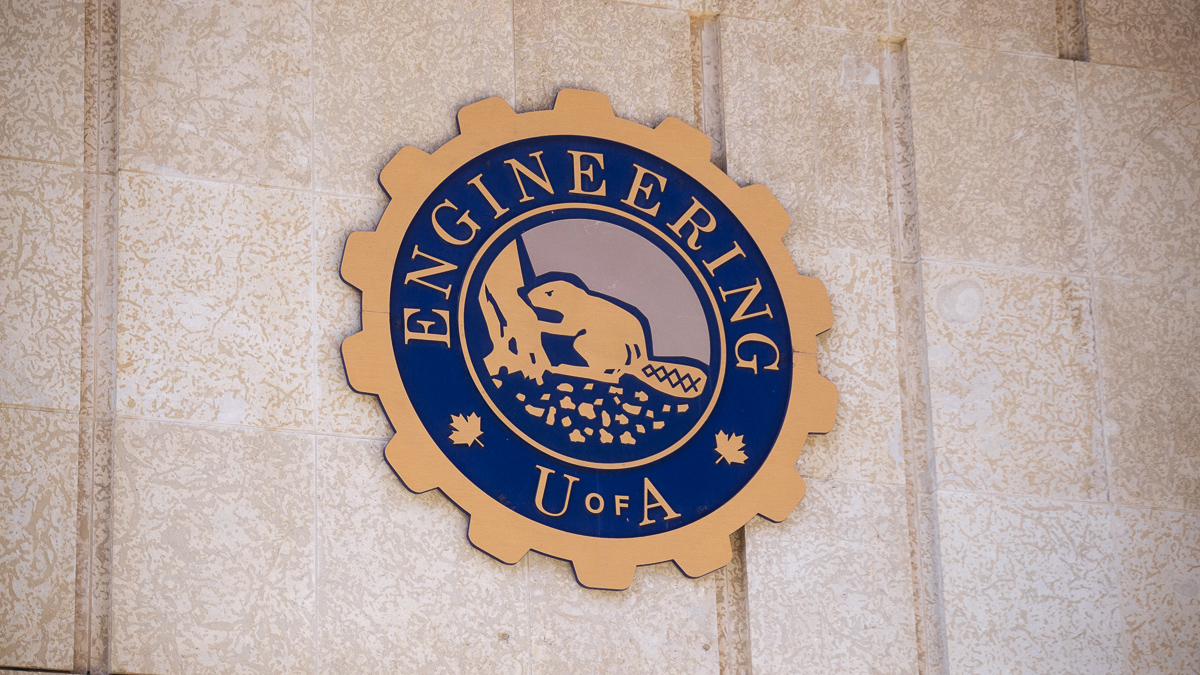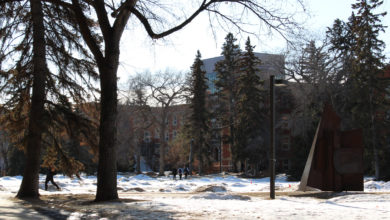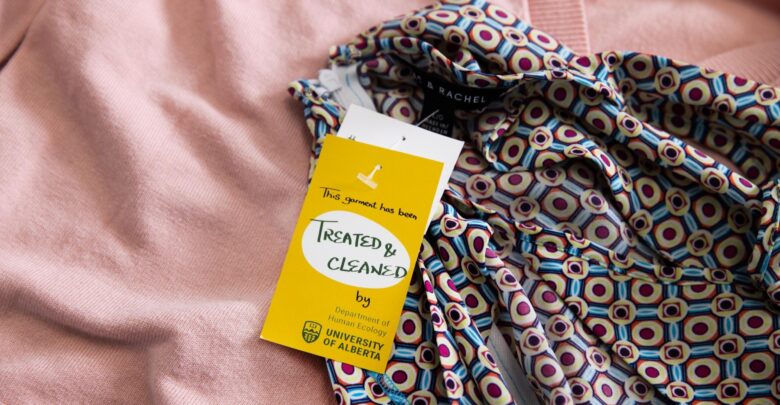 © Curtis Comeau
© Curtis Comeau Wing Sem Mak, a research assistant in the McQueen Textile Research Group in the department of human ecology at the University of Alberta, is aiming to reduce the amount of fabric that ends up in landfills through the Treat and Clean pilot project in collaboration with Mennonite Central Committee (MCC) Thrift in Edmonton.
The Treat and Clean team restores clothing donations MCC Thrift is initially unable to resell due to their condition. The team begins by sorting through various clothing donations to find pieces that are substandard.
“We found that over 40 per cent of these donated textile items were substandard, which means these items could still be used for their original purpose,” Mak said.
After the sorting process, the textile items go through a restoration process, including cleaning or mending. In order to pinpoint efficient ways to remove certain stains, including oil, perspiration, and paint stains, the team referenced various literature reviews.
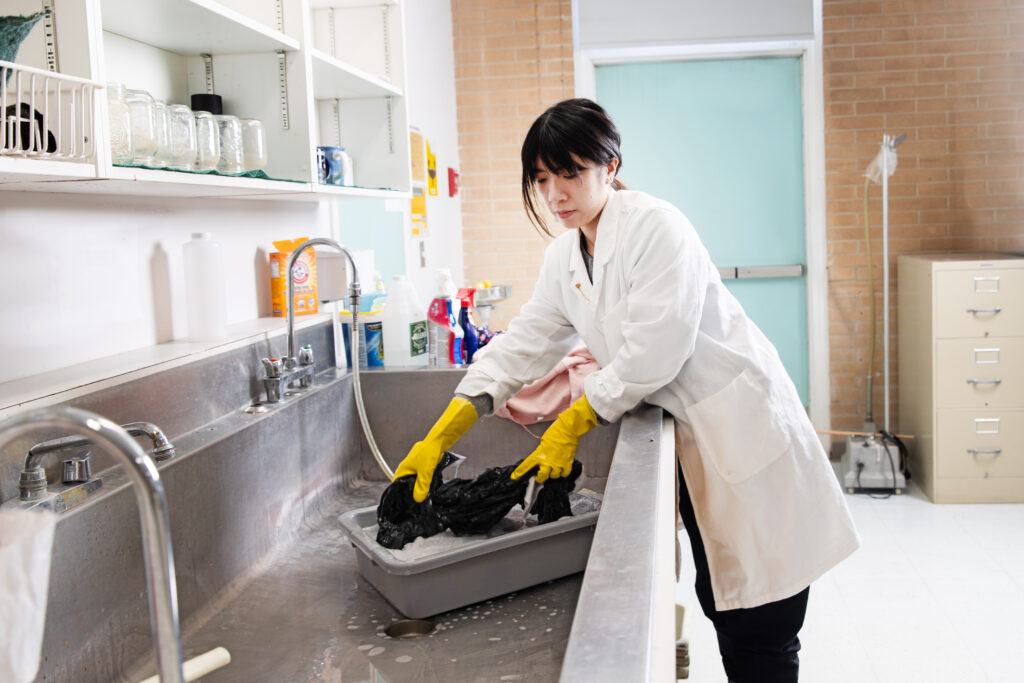
The team has sent 139 garments back to MCC Thrift and confirmed that nearly 60 per cent of those items have sold. This outcome shows a promising future for the reduction of textile waste through restoring garments using simple cleaning techniques.
The main techniques used to clean these stains involve soaking the garments and spot cleaning if necessary with commercially available products, such as Oxiclean powder. For oil stains, they mix baking soda with water to create a paste, then spread it onto the stain. After 15 to 30 minutes, they rinse the area and repeat the process to remove the stain.
The fastest stain, usually dirt or dust, takes about five to 10 minutes to clean. However, perspiration stains can take up to one to two hours.
The team seeks to make people more aware of the condition of their clothing donations
Paint and ink stains have been more difficult to resolve as the product has usually set into the fiber structures of the garment. While searching online, they found that some people had used diluted ammonia to deal with paint stains.
“We actually found that we can only remove the top layers of the paint stain,” Mak said.
Through the pilot, it was discovered that roughly half of the donated pieces were made of cotton, and around 25 per cent were polyester. These pieces also tended to have more stains.
“The challenge is trying to identify the stain,” Mak said.
Mak predicts that this project is “more likely to influence the people who donate the garments.”
“It’s better for people who donate their garments to clean their clothes or their donations before they hand [them] to the thrift stores,” Mak said.
Mak hopes that garments donated can have a second life. She also urges donors to check the pockets.
“Sometimes, we do find some money in the pockets,” Mak said.
“We should try to focus on what we already have and already produced,” Mak says
Many fast fashion items have also ended up in the thrift stores, she noted.
“The garments run faster,” Mak said. “They’ve got more holes on it and the fabrics are thinner and easier to cause damage [to].”
She emphasized that when you buy cheap, the garment’s lifespan is very short.
“Even if we try to fix it, try to remove the stain, it doesn’t last longer because the fabric is still cheaply made and people are not willing to buy it.”
Restoring clothing items not only increases the lifespan of the garments, but also may encourage people to keep them for a longer period of time.
“We should try to focus on what we already have and already produced,” Mak said.
Mak encourages people, especially students, to bring their damaged garments to the Repair Café in the department of human ecology. Students can learn to repair their favourite garments rather than throwing them away or donating them.
“You can try to mend your feeling, your memory, and build a connection with the garments. It’s really a great practice.”

